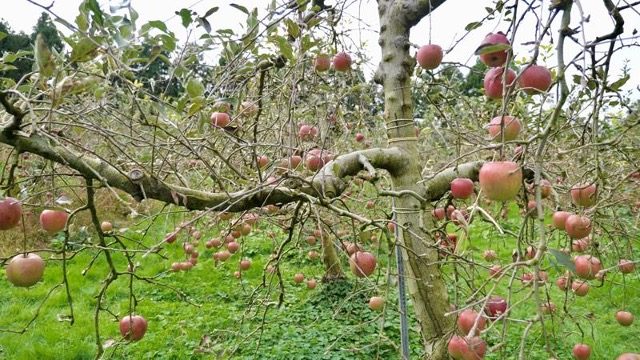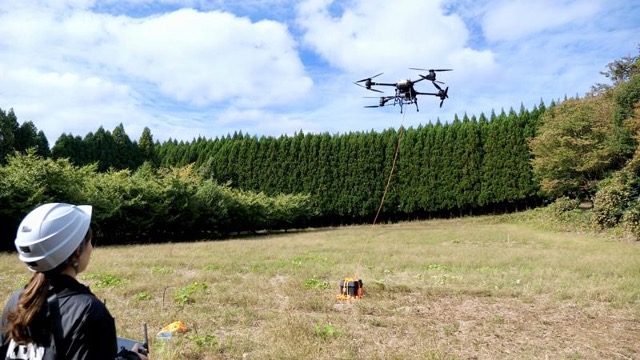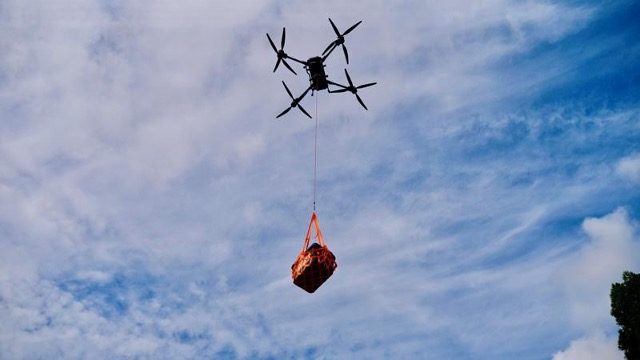

KDDI and DJI Flycart 30 Prove Vital in Overcoming Logistics Challenges After Heavy Rains in Ishikawa Prefecture

 This article published in collaboration with JUIDA, the Japan UAS Industrial Development Association.
This article published in collaboration with JUIDA, the Japan UAS Industrial Development Association.
by DRONELIFE Staff Writer Ian J. McNabb

 Natural disasters are a fact of life in rural Japan, but that doesn’t mean they can’t have devastating impacts on local logistics. When roads wash out or become inaccessible, it can be extremely difficult to move agricultural harvests to storage facilities, risking massive crop loss and high costs to farmers. After heavy rains in Ishikawa Prefecture, roads surrounding Tanbo Orchard, a local apple producer, became inaccessible due to landslides and fallen trees, making harvesting their crop a difficult, (if not impossible), task. Luckily, KDDI, a Japanese drone logistics company, used a DJI Flycart 30 to safely deliver the apples to a nearby port.
Natural disasters are a fact of life in rural Japan, but that doesn’t mean they can’t have devastating impacts on local logistics. When roads wash out or become inaccessible, it can be extremely difficult to move agricultural harvests to storage facilities, risking massive crop loss and high costs to farmers. After heavy rains in Ishikawa Prefecture, roads surrounding Tanbo Orchard, a local apple producer, became inaccessible due to landslides and fallen trees, making harvesting their crop a difficult, (if not impossible), task. Luckily, KDDI, a Japanese drone logistics company, used a DJI Flycart 30 to safely deliver the apples to a nearby port.


The harvest season for the local “Shuhei” apples is in October, but with the roads closed, KDDI drone operators, working via a partnership with Ishikawa authorities, had to use cargo drones to carry the harvest 1.2 km, reducing a 40 minute journey by foot (carrying heavy bags of apples) to a 2 minute trip. In total, around 880 lbs (400 kg) of apples were transported in 20 trips over 2 days, each trip bringing around 40 kg of apples.
Tanbo Orchard’s Tanbo Masahiro said, “Due to landslides and collapsed roads, it was impossible to get to the orchard by car, so we consulted with Ishikawa Prefecture and learned about this new method of transport by drone, and decided to give it a try. Loading apples onto a drone takes longer than by car, but once we got the hang of it, it went smoothly. It meant that the harvested apples did not go to waste, and we felt that it would be extremely useful in times of disaster like this. Once the roads are repaired, we would like to try using drones to transport the apples we plan to ship from now on.”


The project used a DJI Flycart 30, which features a coaxial four-axis, eight-blade, multi-rotor configuration with carbon fiber propellers, a 20 m/s maximum flight speed, and a dual-battery configuration for carrying a 30 kg payload over 16 km. The unit also features IP55 protection, is capable in temperatures from -20° to 45° C, and winds up to 12 m/s. The whole system is optimized for altitudes from 0-6,000 m and support flight up to 3,000 m with a 30 kg payload, and features self-heating batteries for optimal performance in low temperatures.
Want DRONELIFE news delivered to your inbox every weekday? Sign up here.
Read more:


Miriam McNabb is the Editor-in-Chief of DRONELIFE and CEO of JobForDrones, a professional drone services marketplace, and a fascinated observer of the emerging drone industry and the regulatory environment for drones. Miriam has penned over 3,000 articles focused on the commercial drone space and is an international speaker and recognized figure in the industry. Miriam has a degree from the University of Chicago and over 20 years of experience in high tech sales and marketing for new technologies.
For drone industry consulting or writing, Email Miriam.
TWITTER:@spaldingbarker
Subscribe to DroneLife here.





Related Posts
Blue Marble Shows How AI and LiDAR Deliver ROI for Rail Operators
First Breach and ideaForge Establish US Drone Manufacturing Partnership
Tennessee Drone and AAM Symposium Discusses Future of Mobility